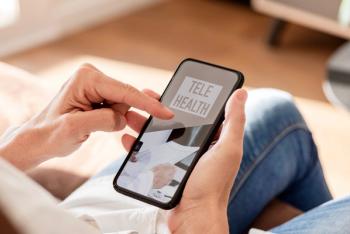
Integrating EHRs and telehealth platforms can benefit ambulatory care providers
An entirely remote patient-provider experience can deliver on improving outcomes.
What was a small spark of interest in telehealth over the past decade quickly ignited in 2020 as the COVID-19 pandemic swept the country. As a result, many ambulatory care providers were forced to quickly pivot and find new, creative ways to connect with and treat patients outside of the four walls of their practice.
While once a fantasy, telehealth now makes this a reality.
From Then to Now: The Rapid Growth in Telehealth
Interestingly, in 2018 MGMA asked healthcare leaders
At the start of 2020, Forrester estimated that only about
Propelling Telehealth in Day-to-Day Practice
Much of this growth can be attributed to government actions addressing the COVID-19 public health emergency. For example, the U.S Department of Health and Human Services
The Centers for Medicare & Medicaid Services (CMS) also made temporary policy changes, simplifying the process for people enrolled in Medicare, Medicaid, and the Children's Health Insurance Program (CHIP) to receive medical care through telehealth services. After CMS announced these changes, many private insurers followed suit, too, further fostering the use of telehealth during the pandemic.
By April 2020, telehealth claims increased 8,336% year-over-year. And within the first three months of COVID, more than
Regardless of rules governing privacy and reimbursement, patients and providers are advocating for telehealth moving forward.
Why EHR-Integrated Telehealth Solutions Are Key for Ambulatory Care Providers
For ambulatory care providers, having a telehealth solution integrated with its core EHR is a key component to reducing provider burnout and maximizing the efficiency of the practice. Furthermore, an integrated telehealth solution arms practices with a complete interoperable health-IT solution – which is critically needed to succeed in a post-COVID environment.
While there are hundreds of telehealth platforms on the market today, the benefits of EHR-integrated solutions include:
- A comprehensive view of the patient – Having a cohesive platform with a single dashboard enables providers to have all patient information convenient in one location, whether they’re being seen in-person or remotely, to make the best possible care decisions.
- Greater efficiency – Tying these components together eliminates staff having to update the same information in different systems, and minimizes confusion associated with maintaining duplicate records or processes.
- Responsive reporting and billing – Navigating telehealth billing guidelines and the ever-changing requirements of CMS can be a challenge for practices, so it’s important that reporting and billing processes are flexible and easily adaptable to ensure proper reimbursements and payments.
- Ability to see more patients – A streamlined workflow, without duplicate processes, frees providers and staff from unnecessary administrative work, enabling them to do more of what they do best: treat and see patients.
- Increased revenue – As a result of increased patient volumes and greater efficiency, practices will benefit from stronger revenue streams, keeping the practice healthy and viable and thus maintaining business continuity.
By now, we all know that telehealth is here to stay. But in order for this technology to deliver on its true promise, especially as shutdowns and quarantines are nearing their end, today’s providers need virtual care solutions that can be fully implemented and integrated into established workflows, thus enabling an entirely remote patient-provider experience that can deliver on improving outcomes.
About the Author
Chief Product and Technology Officer at
Newsletter
Optimize your practice with the Physicians Practice newsletter, offering management pearls, leadership tips, and business strategies tailored for practice administrators and physicians of any specialty.









